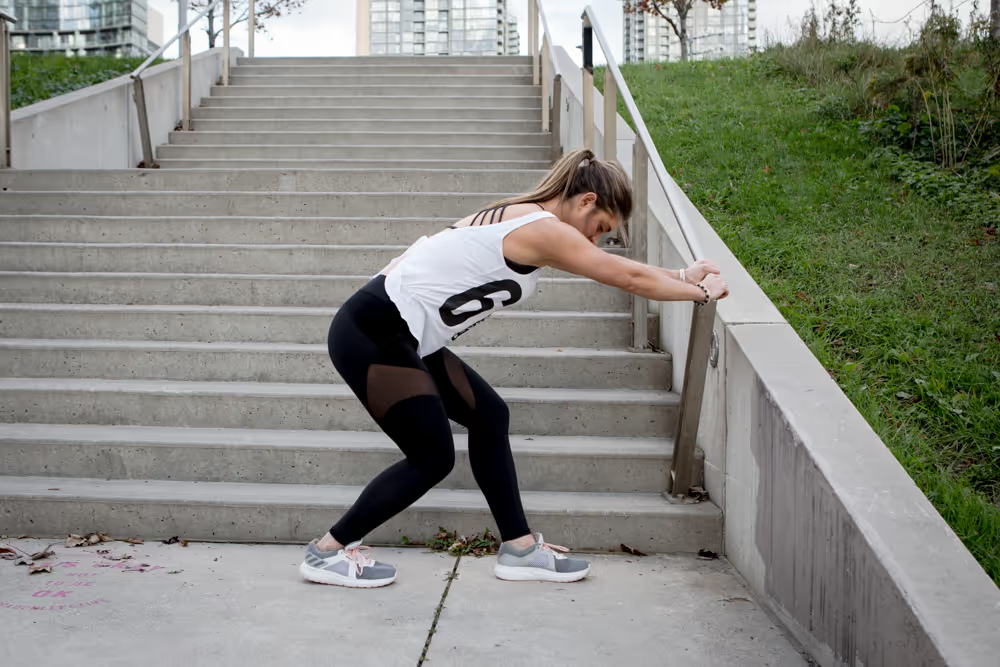Plantar Fasciitis Stretches To Heal Those Heels

Just because you love wearing heels, doesn’t mean you should neglect your heel pain AKA plantar fasciitis pain. We explain four effective plantar fasciitis stretches you need to do. Plantar fasciitis can be such a pain in the heel!
With so many of you strong women out there working diligently to leave your footprints on this world, we understand that dressing like a boss is just as important as working like one. Unfortunately, in some cases, dressing like a boss can take a toll, especially if you’re wearing heels for the entire day.
The obvious answer to avoiding that annoying back of heel pain is to just, “stop wearing heels,” but let’s be realistic ladies, that’s not happening. Since you’re wearing them already, you might as well make it as comfortable and as safe as possible.
The following stretches for plantar fasciitis will help your legs and feet be better prepared to wear heels throughout the day.
Calf Raises


1. Bring your feet together without touching
2. Raise your heels so you are up on your toes
Tip: Avoid rolling out on the outside of your feet. Imagine pushing your big toe into the ground to keep your feet even.
Single Leg Squat


1. Raise one of your heels of the ground
2. Raise that same leg up and behind your body
3. Slightly bend the knee on the same side of the foot that is on the ground
4. Hold for 30s then switch sides. Perform 3x/side
Calf/Achilles Stretch


1. Find a solid platform to push against and stagger your feet into a one line stance
2. Lean into the platform and push away with both a straight leg and a bent leg (as seen here in the picture)
3. Hold for 10s and switch side. Perform 3x/side
Toe Muscles Strengthening


(Do this bare foot)
1. Raise your big toe while keeping your other 4 toes planted. Hold for 10s
2. Drop your big toe and raise your other 4 toes while keeping your big planted. Hold for 10s
3. Repeat on both feet 3x/foot
Like any part of the body, our feet need attention as well. By following these plantar fasciitis stretches and exercises, your feet will thank you as you walk down the streets with confidence! Our bodies are like a building, without a solid foundation, it’s eventually going to break down. So start from the ground up!
The stronger the muscles in our feet, the better it can hold the bones of the feet and ankles in alignment. Thankfully, there are amazing tools out there you can use to help avoid any heel pain so you can put your best foot forward.
It’s time for a 1:1 with a body expert.


.jpg)

